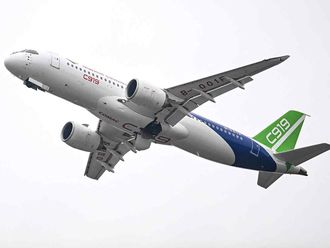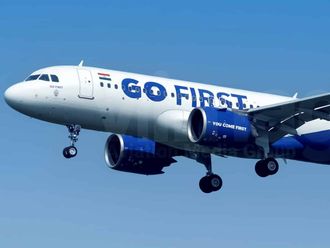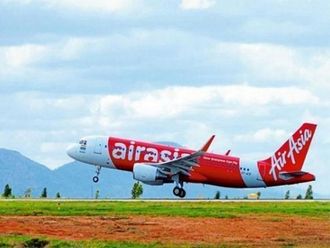Dubai: The United States and Europe need Emirates, the world’s biggest airline on international routes, flying to their cities just as much as Emirates needs to fly to their cities, Shaikh Ahmad Bin Saeed Al Maktoum, President of Dubai Civil Aviation and Chairman and CEO of Emirates airline and Group, said on Sunday.
“They need us, we need them,” Shaikh Ahmad told reporters at the Dubai Airshow.
Emirate and the other Gulf carriers argue they offer a superior, premium service that attracts customers from other legacy carriers operating around the world.
“That really builds up loyalty to the airline,” Shaikh Ahmad said.
Emirates, Etihad Airways and Qatar Airways are facing an increasing level of protectionism in the United States and Europe as large major carriers lobby their governments to block the expansion of the Gulf carriers into their countries.
The Gulf carriers have repeatedly denied the allegations.
Violeta Bulc, the European Commissioner for Transport, is expected in the UAE this week and will meet with the federal General Civil Aviation Authority (GCAA), which is responsible for negotiating air traffic agreements.
Shaikh Ahmad says that existing air traffic agreements should not be changed.
“We have invested a lot of money on those routes,” he said, pointing at purchasing and renting office space, hiring staff and buying equipment in other countries to support its network.
“You name it, a lot of investment is there,” he said.
Shaikh Ahmad said the legacy carriers were now starting to react because they never thought airlines from the Gulf, which use their strategic geographic location to connect east-west traffic, would get so big.
“I’m sure that many airlines wanted to see this Open Sky policy at the time because they always think that nobody would be able to beat them at their own game, and I think they feel now that pinch,” he said.
Emirates is the largest operator of US-made Boeing 777s and European-made Airbus A380s. The airline, which flew 49.3 million passengers in the year to March 31, 2015, is currently deciding whether to order up to 100 Airbus A350s or go with the Boeing 787-10 Dreamliner.
Earlier this week, Boeing said it would not be making any changes to the 787-10 despite concerns from Emirates that the aircraft would struggle to meet expectations in the blistering Arab Gulf summer.
Shaikh Ahmad said Emirates still has not made a decision and the comments by Boeing this week does not change anything just yet. He said he is “sure they will be able to do it if they want to stay in the market.”
“We are still going to be assessing the [A]350 and the 787[-10]. If it is suitable product for us and we think it will be the right type of aircraft, we’ll buy it, if it’s not, we’ll not buy it,” he said.
UAE congested skies
Shaikh Ahmad also said the airspace over the UAE needs to reorganised “in a better way,” lamenting that he did not understand why Dubai International, Al Maktoum International at Dubai World Central (DWC) and Sharjah International share the same holding point when the skies are congested.
Pointing out that DWC is around 40 to 50 kilometres away from Dubai International, he stressed that each airport should have its own holding point.











